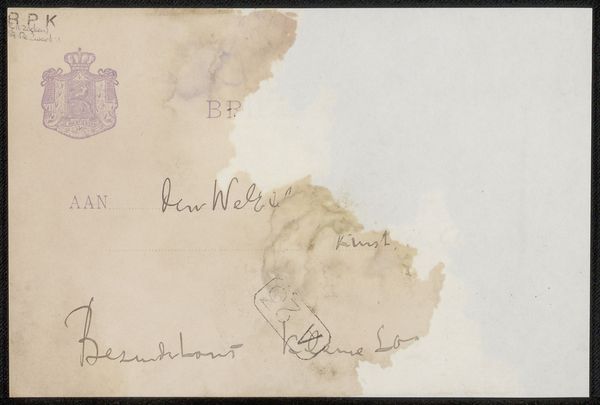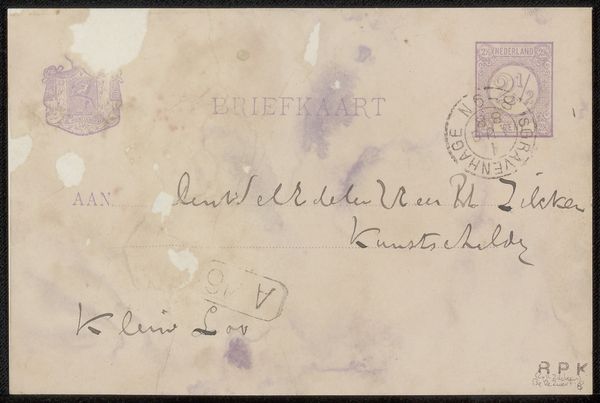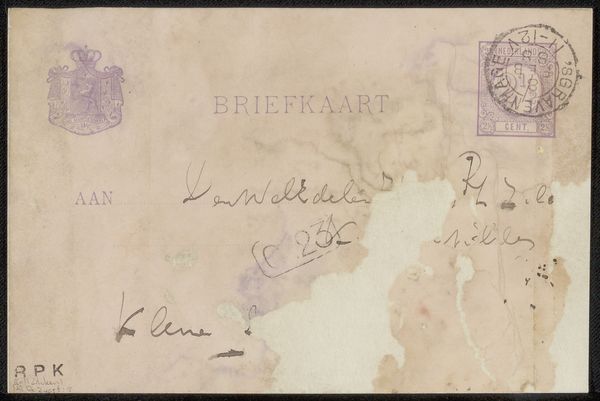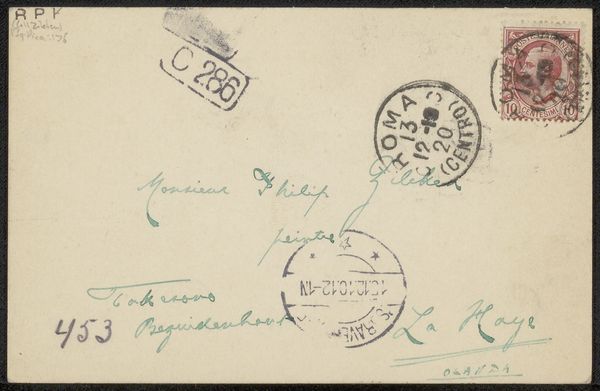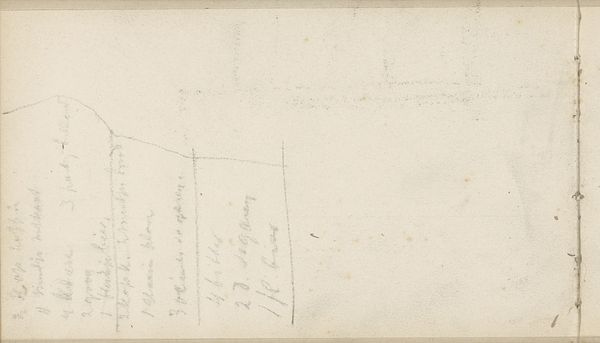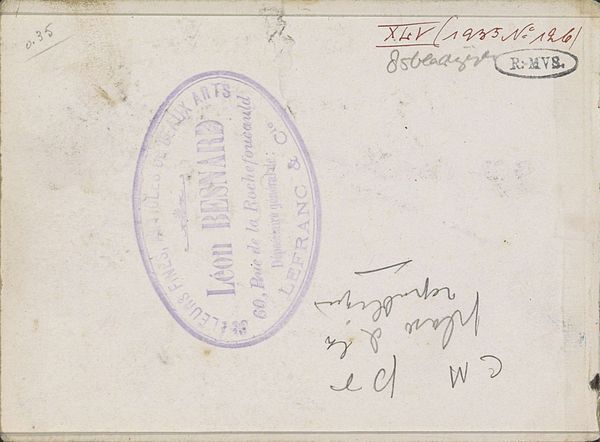
drawing, paper, ink
#
portrait
#
drawing
#
paper
#
ink
#
post-impressionism
#
watercolor
Copyright: Rijks Museum: Open Domain
Curator: Today we're looking at "Briefkaart aan Philip Zilcken," possibly created around 1888 by Willem de Zwart. It's a drawing in ink on paper. My initial impression is one of intimacy, a glimpse into a private correspondence, almost ghostly due to the staining on the paper. Editor: I see a used piece of paper; postal stampings, ink writing. The stains and foxing certainly impact its current state, revealing the fragility of its existence. But what can this little envelope tell us about De Zwart's labor? Curator: For me, the iconography here lies in its mundane yet historical form. The postal markings evoke a past era of communication, a time when correspondence carried a different weight, literally traveling between individuals, forging networks. Editor: Yes, postal networks are key, as are the networks of artists and patrons implied. How was De Zwart connected to Philip Zilcken? Patron, friend, fellow artist? This would likely represent a small investment from both individuals and their support system for their shared careers. Curator: Well, let’s focus on the image on the front, this elaborate coat of arms in violet ink. In that time and place, the crest alone would have told Zilcken everything he needed to know about the author, before he even unfolded the letter! It speaks to a system of social standing. Editor: You are right, it screams to me, bourgeois and well connected! Perhaps even leveraging social capital through written materials? Let's also think about the physicality of the postcard: the texture of the paper, the kind of ink available, and where he may have procured the object from. Was there perhaps, another stationer whose labour also contributed to this piece? Curator: What intrigues me most is the ephemeral quality. It survived while so many others were lost, carrying those now faded symbols of person and place across a century, until it landed in a museum to intrigue us. Editor: Agreed. Its survival offers a glimpse into a particular moment of exchange; the work put in by not only de Zwart, but the unseen factory worker to create this everyday canvas of correspondence. Curator: A captivating peek at a message in transit— both historically and symbolically. Editor: An everyday reminder that even small art like this is never truly made in isolation; but in relationship to existing material systems.
Comments
No comments
Be the first to comment and join the conversation on the ultimate creative platform.

